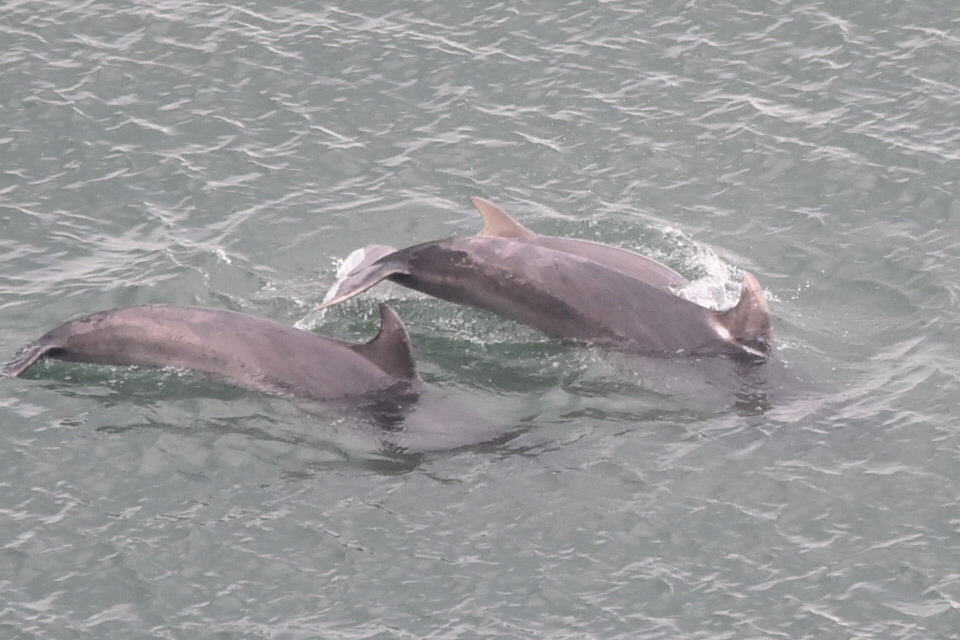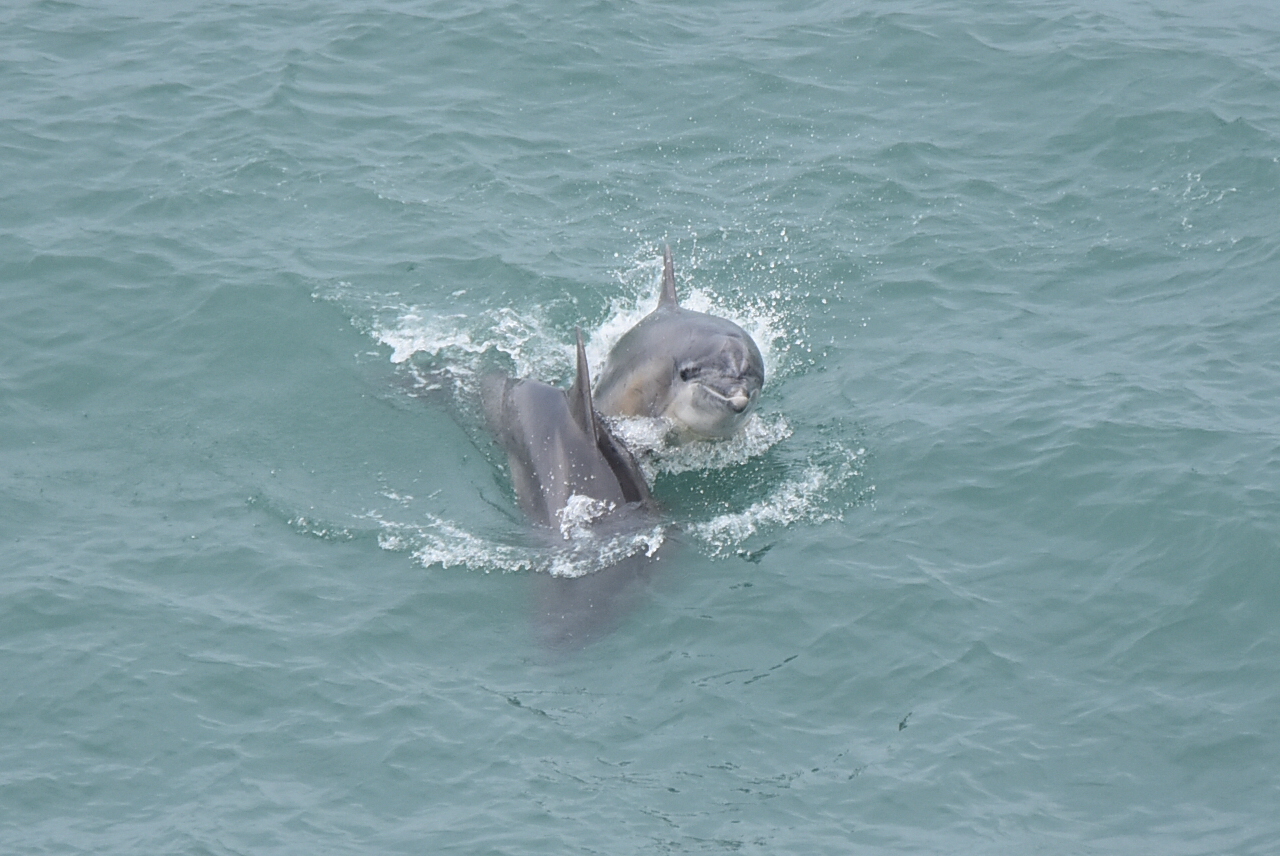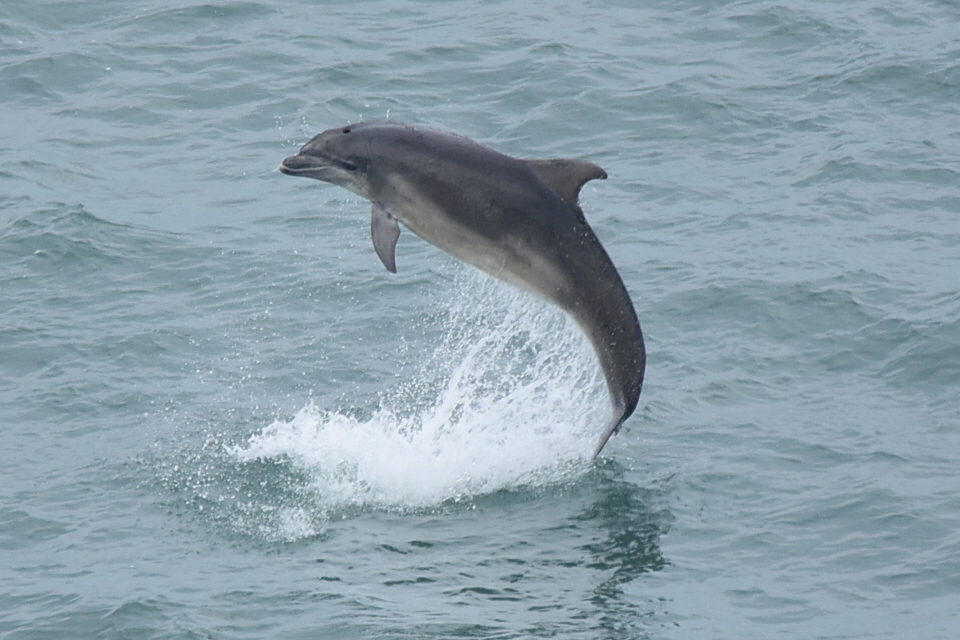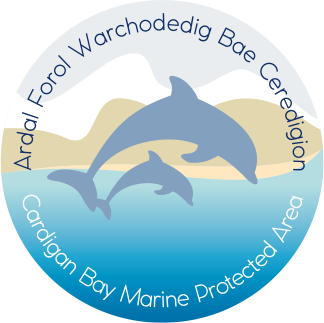Bottlenose Dolphin
Cardigan Bay is one of only two areas around the UK hosting a semi-resident population of bottlenose dolphins; the largest population are here in Cardigan Bay, there is also a semi-resident population in the Moray Firth in Scotland. The bottlenose dolphins that live around the British Isles are the biggest in the world!
The southern half of Cardigan Bay is an important summer feeding and breeding area for these animals. They use these waters for nurturing and feeding their young, socialising and resting. They can also be frequently seen tail slapping and breaching – leaping several metres out of the water!
Bottlenose dolphins reach sexual maturity at about twelve years of age and females give birth to a single calf between April and October. Calves are dependent on their mothers’ milk for about two years, and usually stay with their mothers until they are around six years of age. During this time the juveniles must learn how to catch their prey, how to avoid dangers, and how to find their way around their home range. Bottlenose dolphins can live for up to fifty years.
Bottlenose dolphins are opportunistic feeders, they can adapt their feeding behaviour to local conditions and food sources. They feed on a wide range of both schooling and bottom-dwelling species of fish, and also squid and crustaceans.

Photograph by David Cunniffe

Photograph by David Cunniffe

Photograph by David Cunniffe
Bottlenose dolphins are widely distributed; polar waters are the only region where they are absent. They are mainly coastal animals and usually frequent near shore habitats. Worldwide, bottlenose dolphins are under threat from fisheries interactions, pollution, habitat degradation and other anthropogenic influences.
Bottlenose dolphins are a highly mobile and wide-ranging species. Individuals recorded regularly along the southern coast of Cardigan Bay have also been seen both north and south of the SAC. Over 300 bottlenose dolphins are known to be using Cardigan Bay, around 200 in any year, with numbers increasing throughout the summer and reaching a peak in late September and October.
The coast between New Quay and Cemaes Head has been the area of greatest observer effort over the years, with dolphins often sighted within the SAC off headlands and in more sheltered areas near Aberystwyth, New Quay, Ynys Lochtyn, Aberporth, Mwnt, and the Teifi Estuary.
Bottlenose dolphin fact file
Description: Bottlenose dolphins grow to an average length of 3.1 to 3.7 metres (10 -12 ft), reaching up to 4m in UK waters where they are on the edge of their northern range.
Behaviour: Bottlenose dolphins appear to use Cardigan Bay for all essential activities including feeding, socialising and nurture of their young, with a preference for areas of strong tidal currents near headlands and estuaries.
Diet: Fish, crustaceans & molluscs
Reproduction: Males reach sexual maturity at age 10-12 whilst female can start reproducing between at age 8-12. Females give birth to a single calf every 4 to 6 years after a gestation period of 12 months. Calves will suckle for 18 to 24 months but the mother calf bond can last up to 6 years.
Local numbers: Over 300 bottlenose dolphins are known to be using Cardigan Bay, around 200 in any year, with numbers increasing throughout the summer and reaching a peak in late September and October.
